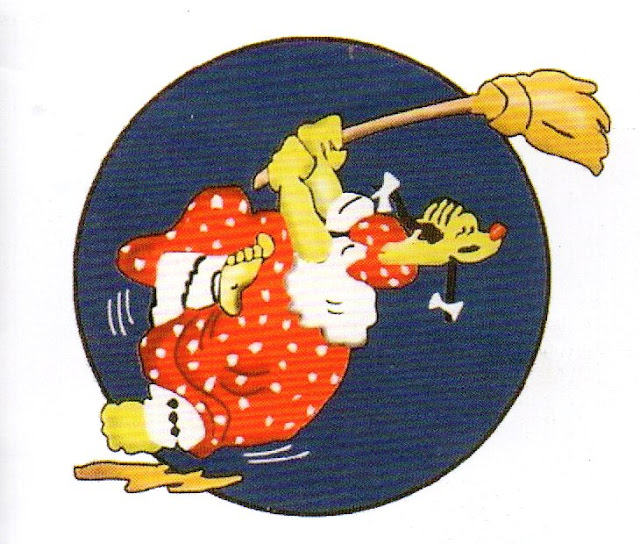The Republic's Wings.
This a mainly photographic post, but it is significant because these pictures are relatively rare and they were probably never published in the Unites States. The article appeared on the No. 113 issue of Ali Antiche, the magazine of G.A.V.S., the Italian organization for the preservation of historical aircraft, and it was published here with their permission.
When Italy Exported Airplanes
By Giancarlo Polidori (Translated by L. Pavese)
The
period between the two world wars was a time of great achievements for the Italian
aviation industry. The long distance cruises in formation and the record-setting flights were followed by a considerable activity of export.
More than 1,500 aircraft were sold throughout the world, more than 100 of which went to the Austrian Republic. For Italy that was a
great economic boost, but it was also a means of obtaining strategic raw material for which there
was a great need. For every aircraft sold, a double amount of raw material had to be given in exchange.
It might even be surprising that foreign countries bought Italian aircraft
of manifestly obsolete technology, but the local conditions, the
immediate availability, and the comparatively low price of the Italian airplanes must
be considered.
The Austrian Republic imported 33 FIAT CR.20bis' and 3
CR.20B's, of which 17 CR.20bis' and 1 CR.20B's were incorporated and employed by the
German Luftwaffe after the Anschluss.
In addition, three FIAT CR.30bis' and three CR.30B's were purchased later in an
effort to modernize the Austrian flight-line. By that time, the characteristics of the CR.30 were already considered unsatisfactory even in the manufacturing country, and the CR.30's were soon replaced by the
more capable CR.32's. A line of CR 32's, in their characteristic ivory-colored livery, can be seen in the title photograph.
The order was for 45 bis version CR.32's that would serve with the 2nd Austrian Jagdgeschwader. After the German annexation of Austria these aircraft became trainers and, afterwards, 36 surviving CR.32's were ceded to Hungary.
The order was for 45 bis version CR.32's that would serve with the 2nd Austrian Jagdgeschwader. After the German annexation of Austria these aircraft became trainers and, afterwards, 36 surviving CR.32's were ceded to Hungary.
Twenty Caproni Ca.100's with FIAT A50 radial air-cooled engines were assigned to the Austrian flight schools with civilian registration, but very often with both military and civilian registration numbers. Eleven of these airplanes were later incorporated in the Luftwaffe.
 |
| "Caproncino" (Caproni Ca.100), with FIAT A50 radial engine (Italian military registration MM 55770), with both Austrian civilian registration OE-TCC and Austrian military registration 473. |
Another small acquisition consisted of half a dozen FIAT-Ansaldo
A.120R's in a special version, with modifications requested by the Austrians to
the cockpit, and with the addition of a frontal radiator under the nose.
In an effort to equip the Austrian Air Force with a valid trainer, twelve Breda Ba.28's, with Piaggio P.VII engines, were purchased. Only fifty of these aircraft were built. The Breda Ba.28 was not very loved by the pilots, who considered it dangerous in aerobatics. Six of the Austrian Ba.28's eventually went to train German pilots.
Five CA.133's were bought from Caproni, one of which was soon lost in an accident. The Germans took possession of the other four, which served in multiple roles from transport to liaison duties, from training to para-troop launch.
Eight Romeo Ro.37's were purchased with the proceeds of a public fund-raising effort, which included the sale of special letter seals. Two of these were later incorporated in the Luftwaffe.
I hope you found that interesting.
All comments, as usual, will be very appreciated.
Thank you,
Leonardo Pavese
 |
| A FIAT C.R. 20. Civilian registration: A 125. Unknown Austrian registration. |
 |
| A technician is performing pre-flight maintenance on an Austrian FIAT C.R. 20bis. The Austrian registration numbers are not visible. |
 |
An Austrian FIAT C.R. 32bis with civilian registration A 157, and CN 503 under the horizontal stabilizer.
|
In an effort to equip the Austrian Air Force with a valid trainer, twelve Breda Ba.28's, with Piaggio P.VII engines, were purchased. Only fifty of these aircraft were built. The Breda Ba.28 was not very loved by the pilots, who considered it dangerous in aerobatics. Six of the Austrian Ba.28's eventually went to train German pilots.
 |
| A Breda Ba. 28, part of a batch of twelve aircraft, with military registration 511. |
Five CA.133's were bought from Caproni, one of which was soon lost in an accident. The Germans took possession of the other four, which served in multiple roles from transport to liaison duties, from training to para-troop launch.
 |
| In flight view of a Caproni Ca.133. Austrian military registration 32. |
 |
| An Austrian Caproni Ca.133 brings up the end of a line of Ansaldo A 120R's |
 |
The Ansaldo A120R (Austrian civilian registration A 101), which shows the additional chin radiator.
|
 |
| During the war, the Caproni Ca.133's were painted in a camouflage pattern. In the foreground there is the Messerschmitt Bf 108 Taifun OE-TKA. |
Eight Romeo Ro.37's were purchased with the proceeds of a public fund-raising effort, which included the sale of special letter seals. Two of these were later incorporated in the Luftwaffe.
 |
Austrian military and civilian officials review a line of Ro.37
with Austrian insignia but still with the original Italian camouflage. |
I hope you found that interesting.
All comments, as usual, will be very appreciated.
Thank you,
Leonardo Pavese





Very good blog thanks for sharing such wonderful blog with us ,after long time came across such knowlegeble blog. keep sharing such informative blog with us.
ReplyDeleteAir Hostess Training in Chennai | Air Hostess Training Institute in Chennai | Air Hostess Academy in Chennai | Air Hostess Course in Chennai | Air Hostess Institute in Chennai
Thanks Annie,
DeleteI wish you all the best in your career.
Leon.